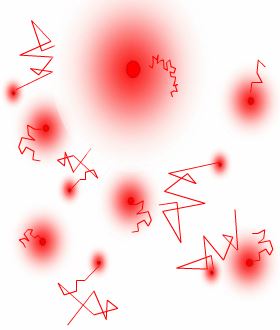January 10, 2015
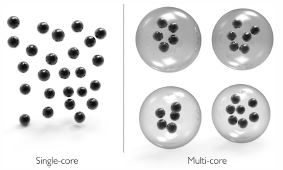 In a recent review - called a perspective - Lucia Gutierrez and collaborators wrote a nice discussion of the current state of the art in making magnetic nanoparticles. They write that many different single-core and multi-core magnetic iron oxide nanoparticles are being made for biomedical applications. There are more examples of multi-core magnetic particles than single-core ones, especially since coating of particle aggregates within a matrix will result in multi-core particles. However, it is difficult to control the number of cores, inter-core distances and spatial distribution when generating multi-core particles.
In a recent review - called a perspective - Lucia Gutierrez and collaborators wrote a nice discussion of the current state of the art in making magnetic nanoparticles. They write that many different single-core and multi-core magnetic iron oxide nanoparticles are being made for biomedical applications. There are more examples of multi-core magnetic particles than single-core ones, especially since coating of particle aggregates within a matrix will result in multi-core particles. However, it is difficult to control the number of cores, inter-core distances and spatial distribution when generating multi-core particles.
Many parameters of the synthesis procedure may have a strong effect on the particles obtained, including temperature, reagent concentrations, surfactant concentrations, and stirring conditions. This is one of the reasons why scaling-up of some of these synthesis routes is extremely complicated. Indeed, one of the difficulties that particle synthesis faces is in batch-to batch reproducibility. This has led to recent work on alternative reaction platforms that can offer more consistent results. One such platform is the use of microwave irradiation as a heating source.
Check out this interesting paper here.
January 03, 2015
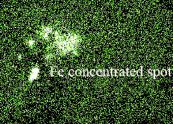 It is never fun to have to admit to a scientific error. However, it is truly appreciated by people discussing a specific paper and not being able to reproduce something. Ramachandran et al. just published a correction in an upcoming Langmuir paper. They had in an earlier paper reported about highly magnetic metallic nanoparticles. Which at the end turned out to be contaminations with iron, as seen by scanning electron microscopy (SEM) and energy-dispersive X-ray
It is never fun to have to admit to a scientific error. However, it is truly appreciated by people discussing a specific paper and not being able to reproduce something. Ramachandran et al. just published a correction in an upcoming Langmuir paper. They had in an earlier paper reported about highly magnetic metallic nanoparticles. Which at the end turned out to be contaminations with iron, as seen by scanning electron microscopy (SEM) and energy-dispersive X-ray
spectroscopy (EDS) mapping. Thank you for being honest and pointing our magnetic particle community to possible problems with today's highly sensitive analysis methods.
January 03, 2015
 Based on recent developments regarding the synthesis and design of Janus nanoparticles, they have attracted increased scientific interest due to their outstanding properties. There are several combinations of multicomponent hetero-nanostructures including either purely organic or inorganic, as well as composite organic–inorganic compounds. Janus particles are interconnected by solid state interfaces and, therefore, are distinguished by two physically or chemically distinct surfaces. They may be, for instance, hydrophilic on one side and hydrophobic on the other, thus, creating giant amphiphiles revealing the endeavor of self-assembly. Novel optical, electronic, magnetic, and superficial properties emerge in inorganic Janus particles from their dimensions and unique morphology at the nanoscale. As a result, inorganic Janus nanoparticles are highly versatile nanomaterials with great potential in different scientific and technological fields. In this paper, we highlight some advances in the synthesis of inorganic Janus nanoparticles, focusing on the heterogeneous nucleation technique and characteristics of the resulting high quality nanoparticles. The properties emphasized in this review range from the monodispersity and size-tunability and, therefore, precise control over size-dependent features, to the biomedical application as theranostic agents. Hence, we show their optical properties based on plasmonic resonance, the two-photon activity, the magnetic properties, as well as their biocompatibility and interaction with human blood serum.
Based on recent developments regarding the synthesis and design of Janus nanoparticles, they have attracted increased scientific interest due to their outstanding properties. There are several combinations of multicomponent hetero-nanostructures including either purely organic or inorganic, as well as composite organic–inorganic compounds. Janus particles are interconnected by solid state interfaces and, therefore, are distinguished by two physically or chemically distinct surfaces. They may be, for instance, hydrophilic on one side and hydrophobic on the other, thus, creating giant amphiphiles revealing the endeavor of self-assembly. Novel optical, electronic, magnetic, and superficial properties emerge in inorganic Janus particles from their dimensions and unique morphology at the nanoscale. As a result, inorganic Janus nanoparticles are highly versatile nanomaterials with great potential in different scientific and technological fields. In this paper, we highlight some advances in the synthesis of inorganic Janus nanoparticles, focusing on the heterogeneous nucleation technique and characteristics of the resulting high quality nanoparticles. The properties emphasized in this review range from the monodispersity and size-tunability and, therefore, precise control over size-dependent features, to the biomedical application as theranostic agents. Hence, we show their optical properties based on plasmonic resonance, the two-photon activity, the magnetic properties, as well as their biocompatibility and interaction with human blood serum.
Check this excellent review out here.
December 20, 2014
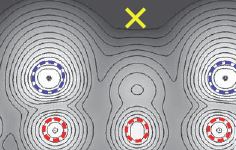 Accurate structures of iron oxide surfaces are important for understanding their role in catalysis, and, for oxides such as magnetite, applications in magnetism and spin physics. The accepted low-energy electron diffraction (LEED) structure for the surface of magnetite, in which the bulk surface termination undergoes an undulating distortion, has a relatively poor agreement with experiment. Bliem et al. show that the LEED structure is much more accurately described by a structure that includes subsurface cation vacancies and occupation of interstitial sites (see the Perspective by Chambers). Such cation redistribution occurs in many metal oxides and may play a role in their surface structures.
Accurate structures of iron oxide surfaces are important for understanding their role in catalysis, and, for oxides such as magnetite, applications in magnetism and spin physics. The accepted low-energy electron diffraction (LEED) structure for the surface of magnetite, in which the bulk surface termination undergoes an undulating distortion, has a relatively poor agreement with experiment. Bliem et al. show that the LEED structure is much more accurately described by a structure that includes subsurface cation vacancies and occupation of interstitial sites (see the Perspective by Chambers). Such cation redistribution occurs in many metal oxides and may play a role in their surface structures.
Check it out at Science 5 December 2014:Vol. 346 no. 6214 pp. 1215-1218, DOI:10.1126/science.1260556
December 15, 2014
 Spinomix SA, a Swiss technology platform company announced the approval of two US patents while three others are pending approval. The two US Patents are number US 8,585,279 and US 8,870,446 relating to the manipulation and mixing of magnetic particles in microfluidics environments.Spinomix provides innovative sample processing solutions to the life sciences sector. The company’s unique MagPhase technology enables homogenous handling of magnetic beads in microfluidics based systems, thus enhancing bioassay efficiency and in a further step, allowing for sample processing automation. MagPhase technology is currently applied in nucleic acid purification, a market estimated to represent over one billion dollars. The vision of the company is to expand the use of microfluidic cartridges into additional areas, such as protein purification or cell isolation.
Spinomix SA, a Swiss technology platform company announced the approval of two US patents while three others are pending approval. The two US Patents are number US 8,585,279 and US 8,870,446 relating to the manipulation and mixing of magnetic particles in microfluidics environments.Spinomix provides innovative sample processing solutions to the life sciences sector. The company’s unique MagPhase technology enables homogenous handling of magnetic beads in microfluidics based systems, thus enhancing bioassay efficiency and in a further step, allowing for sample processing automation. MagPhase technology is currently applied in nucleic acid purification, a market estimated to represent over one billion dollars. The vision of the company is to expand the use of microfluidic cartridges into additional areas, such as protein purification or cell isolation.
To read more, check out Spinomix website.
December 15, 2014
 Recent efforts between the University of Maryland (UMD) and Bethesda-based Weinberg Medical Physics LLC (WMP) have led to a new technique to magnetically deliver drug carrying particles to hard-to-reach targets. The method has the potential to transform the way deep-tissue tumors and other diseases are treated. UMD Fischell Department of Bioengineering (BioE) alumnus Dr. Aleksandar Nacev and BioE and Institute for Systems Research Professor Benjamin Shapiro have teamed up with WMP to exploit fast pulsed magnetic fields to focus nano-therapeutic magnetic particles to deep targets.
Recent efforts between the University of Maryland (UMD) and Bethesda-based Weinberg Medical Physics LLC (WMP) have led to a new technique to magnetically deliver drug carrying particles to hard-to-reach targets. The method has the potential to transform the way deep-tissue tumors and other diseases are treated. UMD Fischell Department of Bioengineering (BioE) alumnus Dr. Aleksandar Nacev and BioE and Institute for Systems Research Professor Benjamin Shapiro have teamed up with WMP to exploit fast pulsed magnetic fields to focus nano-therapeutic magnetic particles to deep targets.
Pulsed magnetic fields allowed the team to reverse the usual behavior of magnetic nano-particles. Instead of a magnet attracting the particles, they showed that an initial magnetic pulse can orient the rod shaped particles without pulling them, and then a subsequent pulse can push the particles before the particles can reorient. By repeating the pulses in sequence, the particles were focused to locations deep between the electromagnets.
To find out the details for yourself, check out the Nano Letters paper which is available online at http://dx.doi.org/10.1021/nl503654t with a video showing the magnetic focusing at http://ter.ps/magnetic.
November 26, 2014
 Wow, Miltenyi is already 25 years old - how the time flies. They fittingly celebrate their achievements by publishing a MACS anniversary issue where they highlight how helpful magnetic particles are in today’s most promising approaches to cellular therapies, involving regulatory T cells, NK cells, stem cells, neural cells, and CAR-expressing T cells. The field of immunotherapy is becoming more and more important, as being able to regulate the behaviour of these cells will help to treat cancer, autoimmune diseases.
Wow, Miltenyi is already 25 years old - how the time flies. They fittingly celebrate their achievements by publishing a MACS anniversary issue where they highlight how helpful magnetic particles are in today’s most promising approaches to cellular therapies, involving regulatory T cells, NK cells, stem cells, neural cells, and CAR-expressing T cells. The field of immunotherapy is becoming more and more important, as being able to regulate the behaviour of these cells will help to treat cancer, autoimmune diseases.
Miltenyi Biotec revolutionized cell processing for both basic research and clinical application. Their techniques help to unleash xenograft technology, which is a leap forward in cancer research. In their anniversary issue of MACS, you can check on two fold-out pages the milestones that got Miltenyi Biotec from their first product, the superparamagnetic biotin Microbeads, different columns and the MACS separator which allowed for magnetic isolation of cells, to today, with now fully automated systems for cell isolation, flow cytometry, cell soring and molecular analysis. A remarkable story. Check out their anniversary issue !
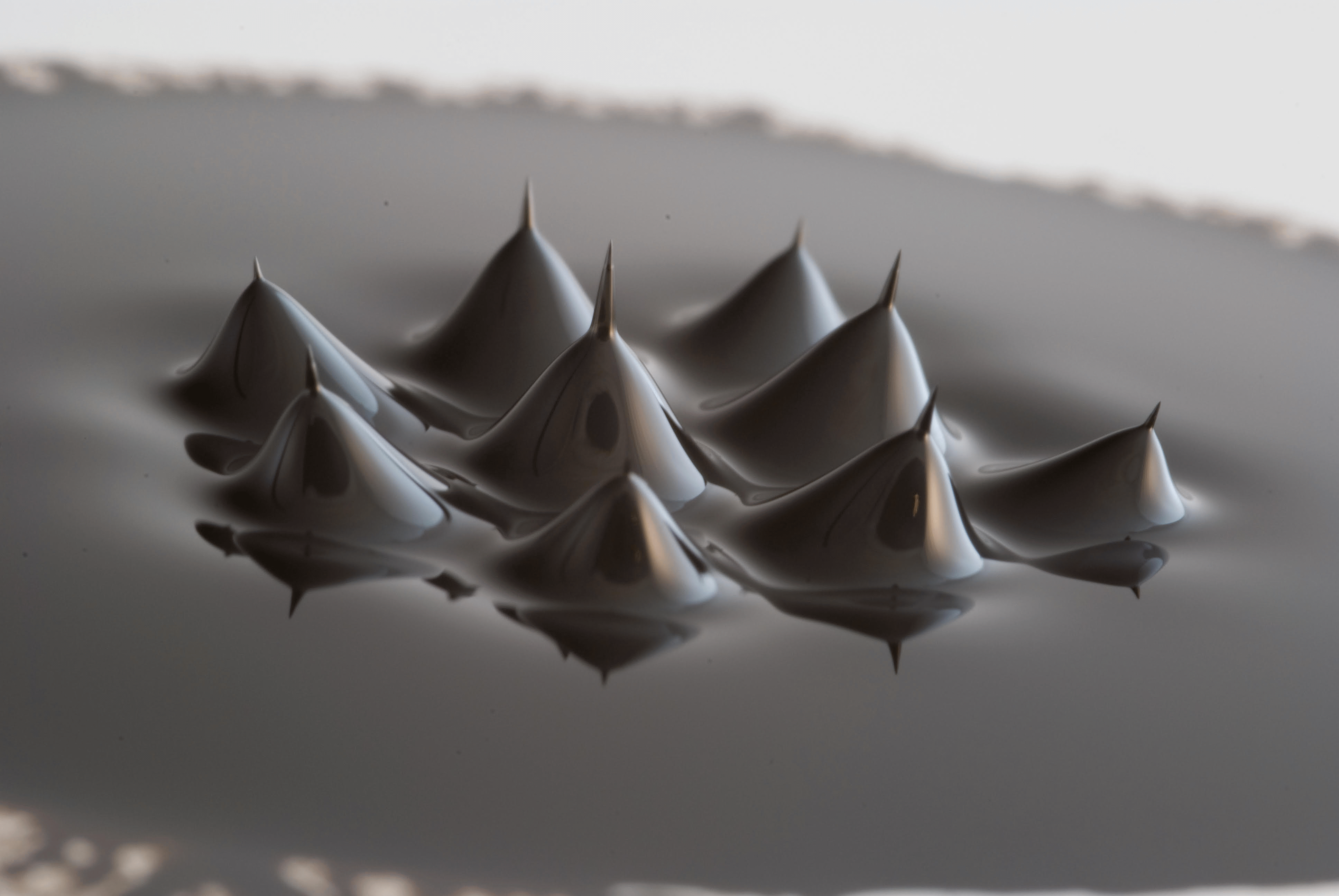
Beautiful ferrofluid, with a curious and striking 'peak-on-a-peak' effect. Submitted by Quentin Pankhurst.
Search this site with the power of
Last Modified: February 22, 2024 -
Magneticmicrosphere.com © 2025






 Recent efforts between the University of Maryland (UMD) and Bethesda-based Weinberg Medical Physics LLC (WMP) have led to a new technique to magnetically deliver drug carrying particles to hard-to-reach targets. The method has the potential to transform the way deep-tissue tumors and other diseases are treated. UMD Fischell Department of Bioengineering (BioE) alumnus Dr. Aleksandar Nacev and BioE and Institute for Systems Research Professor Benjamin Shapiro have teamed up with WMP to exploit fast pulsed magnetic fields to focus nano-therapeutic magnetic particles to deep targets.
Recent efforts between the University of Maryland (UMD) and Bethesda-based Weinberg Medical Physics LLC (WMP) have led to a new technique to magnetically deliver drug carrying particles to hard-to-reach targets. The method has the potential to transform the way deep-tissue tumors and other diseases are treated. UMD Fischell Department of Bioengineering (BioE) alumnus Dr. Aleksandar Nacev and BioE and Institute for Systems Research Professor Benjamin Shapiro have teamed up with WMP to exploit fast pulsed magnetic fields to focus nano-therapeutic magnetic particles to deep targets.